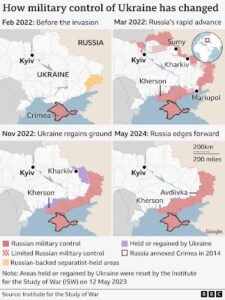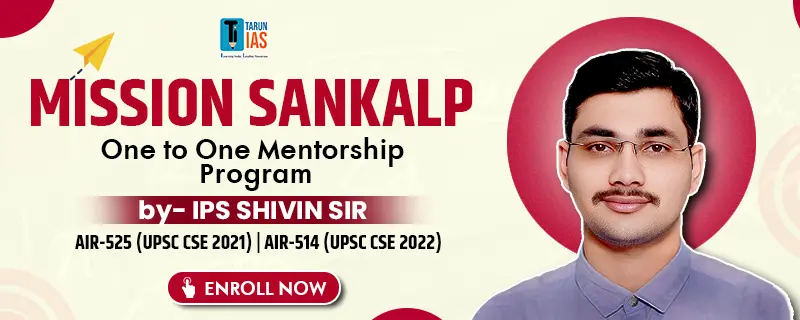Introduction
- Prime Minister Narendra Modi recently arrived in Kyiv with a message of peace, aboard the ‘Rail Force One’ train under tight security.
- This visit has been keenly watched in the backdrop of the Russia-Ukraine war and the geopolitical tumult it has caused.
- Modi’s was the first visit by an Indian prime minister to Ukraine—formerly a part of the erstwhile Soviet Union—since it became a sovereign independent nation in 1991.
India’s Foreign Policy Stand on the Russia-Ukraine Crisis
Non-alignment and Strategic Autonomy:
- India’s foreign policy has long been shaped by the principles of non-alignment and strategic autonomy. Even in the Russia-Ukraine crisis, India has tried to maintain a balanced approach, avoiding complete alignment with any global power. This approach seeks peaceful negotiation of territorial disputes, reflecting India’s broader historical stance.
Neutrality and Abstention at International Forums:
- Since the onset of the conflict in 2022, India has adopted a neutral stance, abstaining from votes in the United Nations Security Council (UNSC) and the United Nations General Assembly (UNGA). Despite pressure from Western countries to condemn Russia, India has avoided direct condemnation and instead called for dialogue and diplomacy.
Economic and Strategic Considerations:
- India has continued to import discounted Russian oil, prioritizing energy security amid global price fluctuations. Simultaneously, India has recognized the need to diversify its defense procurement, gradually reducing dependence on Russian military supplies.
-
- India has significantly strengthened its defense partnership with the U.S. through agreements like the Defense Technology and Trade Initiative (DTTI) and the acquisition of U.S. military equipment.
- Notable examples include the purchase of Boeing P-8I maritime surveillance aircraft and Lockheed Martin’s C-130J Super Hercules transport aircraft, This pragmatic approach showcases India’s balancing of economic and strategic interests.
- The Indian military has purchased systems like the Barak-8 surface-to-air missile, co-developed with Israel, demonstrating diversification away from Russian-made defense systems.
-
Support for Institutional Conflict Resolution Mechanisms:
- India has consistently advocated for resolving disputes through institutional frameworks like the UN, emphasizing the importance of respecting international laws and norms. India’s approach aligns with its broader foreign policy of seeking peaceful resolutions to conflicts.
Read also: Explore the India-Ukraine Relations A Complex Tapestry of Cooperation and Challenges | UPSC
India’s Diplomatic Engagement and Mediation Intentions
- Balancing Diplomatic Ties: Prime Minister Narendra Modi’s recent visits to Russia and Ukraine, alongside dialogues with U.S. President Joe Biden and Russian President Vladimir Putin, reflect India’s balancing act. These actions highlight India’s effort to maintain strong relationships with both Russia and Western nations.
-
- For instance, despite abstaining from UN votes, India has provided humanitarian assistance to Ukraine. In March 2022, India sent medical supplies and relief materials to Ukraine.
-
- Positioning as a Neutral Mediator: India’s diplomatic engagement with both sides positions it as a neutral player, capable of mediating the conflict. This aligns with India’s image as a responsible global actor, committed to peace and stability.
- Potential Role as a Mediator: Drawing on its historical role in mediating conflicts such as the Korean War armistice and the Colombo Plan, India aims to leverage its unique ties with both Russia and the U.S. to mediate the Russia-Ukraine conflict.
- Reinforcing Leadership in the Global South: By taking a mediation role, India could enhance its standing among Global South nations. India’s involvement would signal a continuation of its leadership in advocating for peace and stability on behalf of developing nations.
Significance of a Peace Settlement in the Russia-Ukraine Conflict
- For the United States: A peaceful resolution would allow the U.S. to refocus its resources on other foreign policy challenges, such as rising tensions in the West Asia region. A peace deal would also reduce the risk of prolonged involvement in a European conflict.
- For European Countries: European nations would benefit from peace through economic recovery and the alleviation of energy insecurity. Peace could ease inflationary pressures caused by energy shortages and provide stability for European economies like Germany and France in 2022.
- For Russia: A negotiation mediated by a neutral party, like India, could provide Russia an honorable exit from the war, avoiding the appearance of capitulating to Western pressure.
- For India: Successfully mediating the conflict would bolster India’s global image as a peacebuilder similar to its previous peace efforts in Sri Lanka. It would align with its broader vision of being a global leader in promoting international peace, stability, and development.
- Global Economic Stability: A peace settlement would ease global economic disruptions caused by the conflict. For example, the war has impacted global supply chains, particularly in food and energy. Ukraine and Russia are major exporters of grain and energy; the conflict has contributed to food shortages in regions like Africa and heightened inflation globally. A ceasefire would help stabilize markets and reduce food insecurity.
- Refugee Crisis Mitigation: The Russia-Ukraine conflict has caused a massive displacement of people, with over 6 million Ukrainians fleeing to neighboring countries, mainly in Europe. A peace deal could help reverse this refugee crisis by allowing displaced persons to return home and easing the strain on European countries providing asylum.
- Global Security and Arms Reduction: The ongoing conflict has intensified global arms races and increased defense spending, particularly in Europe.
-
- For instance, countries like Germany announced a €100 billion ($113 billion) special fund for the Bundeswehr (German armed forces).
- Germany has made plans to acquire advanced military equipment, such as F-35 fighter jets from the U.S. and more advanced air defense systems.
- A peace deal would reduce the need for heightened military expenditures, easing global tensions and contributing to overall international security.
-
- Geopolitical Stability in Europe and Beyond: A settlement would prevent further escalation and involvement of NATO, thus reducing the risk of a larger confrontation between NATO and Russia, which could have dire consequences for global security.

Challenges India Faces in Mediating the Peace Process
Maximalist Positions from Both Sides:
- Both Russia and Ukraine hold firm military stances. Russia’s continued attacks on cities like Kyiv and Ukraine’s counter-offensive in occupied areas like Kherson highlight their unwillingness to compromise. President Zelenskyy has insisted on complete Russian withdrawal, while Russia maintains control over Crimea. These hardened positions, seen in failed Istanbul peace talks in 2022, complicate negotiations.
Competing Demands:
- Zelenskyy demands full Russian withdrawal, while Putin insists Ukraine abandon its NATO membership bid. These mutually exclusive demands were clear in 2022 talks, where both sides refused to shift. India would have to navigate this deadlock carefully.
Conflicting Interests of International Actors:
- Global powers like the U.S. and Europe support Ukraine with military aid, while countries like China maintain neutrality, making peace talks complex. The G20 summit in 2022 showed how divided the international community is over Russia’s actions, complicating mediation efforts.
Perceptions of Partiality:
- India’s close ties with Russia, including continued oil imports and abstaining from UN votes condemning Russia, have raised concerns in the West and Ukraine. This could undermine India’s neutrality, making it harder to be accepted as a mediator.
Read also: Space Sector in India: Major Achievements and Future Goals | UPSC
Way Forward
- Realistic Assessment of Mediation Prospects: India must assess whether Ukraine and its Western allies genuinely want India to mediate. Understanding the political landscape is crucial before committing to active involvement.
- Defining Principles for Peace: India should establish its own set of principles for peace, drawing lessons from successful mediations like the Black Sea Grain Initiative and recent prisoner exchanges between Ukraine and Russia.
- Learning from Historical Precedents: Drawing on its history of mediating international conflicts—such as in the Austria-Soviet crisis and the Korean War armistice—India can apply these lessons to the Russia-Ukraine crisis.
- Overcoming Perceptions of Bias: For India to be accepted as a mediator, it must work to dispel any perception of partiality toward Russia, emphasizing its neutral and balanced approach in resolving international disputes.

